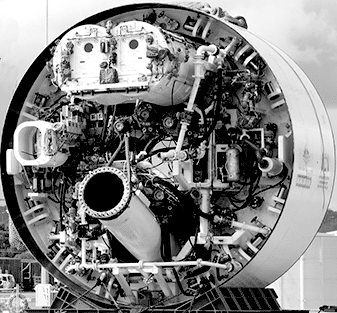More boring for slowed project
 Snowy Hydro Limited is buying a fourth tunnel boring machine (TBM) in a bid to keep the Snowy 2.0 pumped hydro project on track.
Snowy Hydro Limited is buying a fourth tunnel boring machine (TBM) in a bid to keep the Snowy 2.0 pumped hydro project on track.
As the project grapples with significant geological challenges and the underperformance of an existing TBM named Florence, Snowy Hydro says it needs new machinery to hit its revised completion date of December 2028.
The deployment of the new machine is contingent on approval from the New South Wales Department of Planning, Housing, and Infrastructure, which will conduct independent community consultations as part of the assessment process.
The Snowy 2.0 project aims to link the upper Tantangara Reservoir with the lower Talbingo Reservoir through 27 kilometres of tunnels beneath the Snowy Mountains.
Once operational, the project is expected to generate 2,200 megawatts of power, providing crucial energy storage for the National Electricity Market (NEM).
This storage capacity is seen as vital for stabilising the grid during periods of low wind and sunlight, with Snowy 2.0 projected to supply the majority of the NEM’s storage needs.
However, the project has faced a series of setbacks, including cost overruns that have ballooned the budget from an initial estimate of $2 billion in 2017 to $12 billion today.
The timeline for completion has also been extended from the original target of 2021 to late 2028.
Recent ground testing revealed a more complex geological fault zone than previously understood, located along the planned 17-kilometre tunnel route.
This fault zone, while known to project planners, has proved more challenging due to what Snowy Hydro CEO Dennis Barnes described as “initial design immaturity”.
Mr Barnes says that while the fault zone was anticipated, the extent of its complexity necessitated further action to ensure the project remains on schedule.
“The fourth tunnel boring machine is an example of adapting to the situation in front of us, so we are doing everything we can to safely meet Snowy 2.0’s delivery timeline,” Mr Barnes said.
He also acknowledged the role of Florence’s disappointing performance in the decision to bring in an additional TBM, though he emphasised that the geological difficulties would likely have required the fourth machine regardless.
Florence has encountered significant difficulties since its deployment, including being bogged down in soft ground in 2023, which led to the formation of a sinkhole in Kosciuszko National Park.
More recently, it became stuck in hard rock, making minimal progress.
The new TBM, which will be named following a tradition of assigning female names to such machinery, will begin tunnelling from the opposite end of the tunnel to Florence, pending government approval.
The project’s environmental impact has been a contentious issue, given its location within a national park.
Snowy Hydro has stated that the new TBM will operate within the already approved work zone, with no additional land clearing or increased surface and groundwater impacts.
Local communities are to be consulted on any relevant changes to construction methodologies as part of the modification process submitted to the NSW Department of Planning, Housing, and Infrastructure.
Despite the ongoing challenges, Snowy Hydro remains confident that no further budget increases will be necessary, and that the project can meet its adjusted deadlines.








 Print
Print